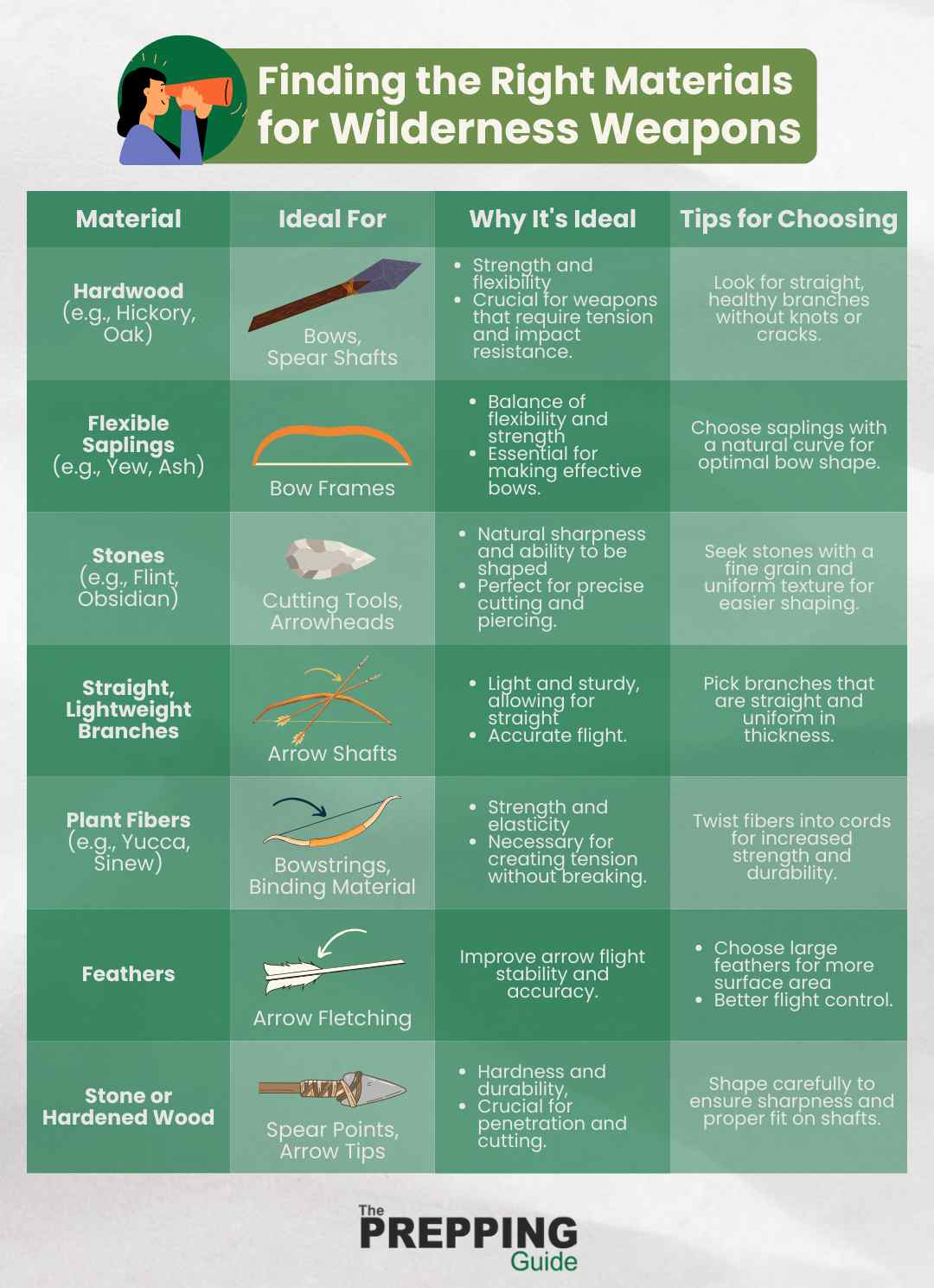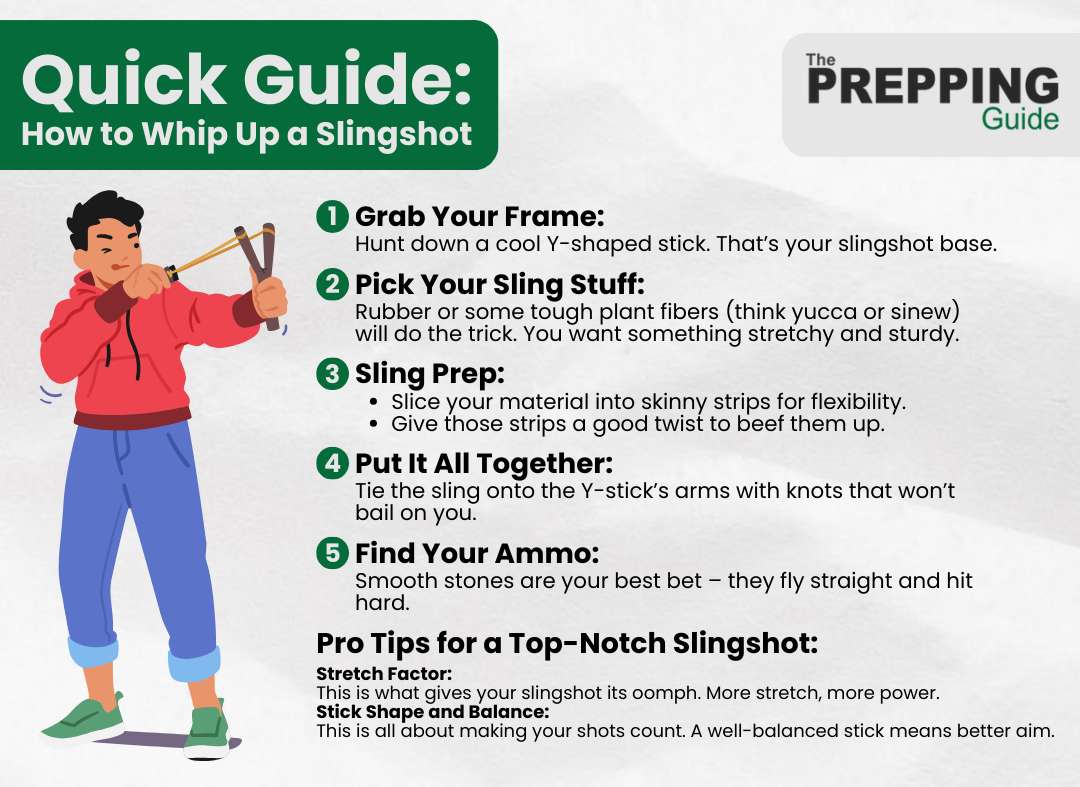
When you find yourself in the wilderness, the knowledge of how to make survival weapons can be the difference between thriving and merely surviving.
The Importance of Survival Weapons
To make survival weapons in the wilderness, gather natural materials like wood, stone, and plant fibers to craft tools such as spears, bows, and knives.
Empowering Yourself with Survival Weapons
Dive into our step-by-step guides to learn the ins and outs of creating your own arsenal from the natural world around you. From identifying the right materials to mastering the art of weapon crafting, we'll ensure you're prepared to face the wilderness with confidence and skill.
Why Do You Need Survival Weapons?
Survival weapons are not just tools; they are your lifeline in the wilderness. They protect you from potential threats, whether it's a wild animal or an unforeseen danger. Having a weapon not only boosts your confidence but also significantly increases your chances of survival. It's about self-defense and being prepared, knowing you can protect yourself and secure food when necessary.
The Art of Crafting Survival Weapons
Crafting these weapons also instills a sense of self-reliance. With the right skills, you can turn natural resources into effective tools. Whether it's a spear for fishing or a slingshot for small game, these weapons ensure you're not just a visitor in the wilderness but a part of it, capable of adapting and thriving.
Finding the Right Materials for Wilderness Weapons
To craft effective survival weapons, you must first find the right materials. Look for sturdy branches for the frame of weapons like bows or slingshots. Stones with sharp edges are ideal for cutting tools or arrowheads. Understanding the properties of these materials—such as flexibility, strength, and sharpness—is crucial in determining their suitability for different types of weapons.

Crafting Your Arsenal: Step-by-Step Guides
Once you've gathered the right materials, it's time to transform them into survival weapons. Crafting your arsenal is not just about making tools; it's about equipping yourself with the means to live another day. Each weapon you create is a step towards mastering the wilderness, providing you with food, protection, and confidence.
DIY Slingshot
A slingshot is a simple yet effective weapon for hunting small game. Start by finding a Y-shaped branch, which will serve as the frame. For the sling, natural rubber or plant fibers like yucca or sinew work well. Strip the fiber into thin strands, twist them together for strength, and attach them to the Y-branch using a secure knot at each end. The center of the sling will hold your projectile, ideally a smooth stone.
Primitive Knives and Axes
Knives and axes are indispensable in the wilderness for cutting, chopping, and carving. To make a knife, find a stone like obsidian or flint with a sharp edge. If the stone isn't sharp enough, you can shape it by striking it with a harder stone to flake off pieces until a sharp edge is formed. For the handle, use a sturdy stick or branch, securing the stone to it with vine or sinew.
Spears and Fish Spears
Spears are versatile weapons for hunting and fishing. Start with a long, straight branch for the shaft. For a hunting spear, sharpen one end into a point. Fire-hardening the point by gently roasting it over flames can increase its durability and lethality. For fish spears, split the shaft's end into multiple prongs, sharpen each prong, and fire-harden them as well.
Throwing Sticks and Atlatls
Throwing sticks and atlatls enhance your range and power when hunting small game and fish. A throwing stick is simply a curved branch, balanced and smoothed for aerodynamic flight. The atlatl, an ancient weapon, uses a shaft with a hook to propel a dart or spear with greater force than by arm strength alone. Create the dart from a straight, lightweight branch, and fashion the atlatl from a longer piece of wood with a notch to hold the dart.
Bows and Arrows
Making a bow and arrows is a challenging but rewarding task. Choose a flexible sapling for the bow, such as yew or ash, and shape it with a knife, leaving the center thicker for strength. For the bowstring, use twisted plant fibers or sinew, ensuring it's taut enough to bend the bow without breaking. Arrows can be made from straight, lightweight branches, with stone or hardened wood tips and feathers or leaves for fletching.

Advanced Survival Weapons
As you become more proficient in crafting basic survival weapons, you might find yourself curious about more advanced or unconventional options. These weapons can offer advantages in specific situations, whether for defense or hunting. Learning to make and use them can expand your survival skills and adaptability in the wilderness.
Maintaining Your Wilderness Weapons: Tips and Tricks
Routine checks for wear and damage, along with timely repairs, can prevent failure at critical moments. For edged tools, such as knives or spears, regular sharpening ensures they remain effective for cutting and hunting tasks. Other weapons, like bows and arrows, require inspection for cracks or weaknesses and adjustments to maintain tension and accuracy.
Final Thoughts: Survival in the wilderness is about more than just enduring; it's about thriving with respect for the natural world. The weapons you craft are tools of survival, imbued with the knowledge and respect you hold for the environment. By balancing ethical considerations with the need for safety, maintaining your tools diligently, and continuously honing your skills, you prepare yourself for whatever challenges the wilderness may present. Remember, the greatest survival tool you possess is your knowledge and how you choose to apply it.
—————————————————————————————————————————————————————————————–
By: kiezelamquiz
Title: Mastering the Wild: Crafting Survival Weapons in the Wilderness
Sourced From: thepreppingguide.com/how-to-make-survival-weapons-in-the-wilderness/
Published Date: Fri, 15 Mar 2024 03:25:19 +0000


